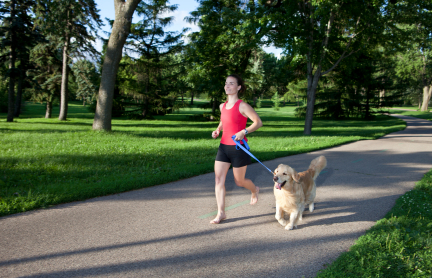Barefoot running is one of the latest fads in the exercise world, and in Austin, where our residents are fans of outdoor activity; I am often asked my opinion on this controversial subject.
In brief: There are too few studies to make a final determination, but I find that this phenomenon, while a boon to some runners, may invite injuries for others.
One thing I know for certain, running barefoot puts the athlete at risk of puncturing a foot on debris. In Texas, where cactus, rocks and a fair share of poisonous critters are common, this is a very real concern. I would recommend any barefoot running aficionado to at least cover their foot surface with something protective. Thankfully, most wear the types of “barefoot” shoes featured here.
There are lots of theories about barefoot running, in particular that the impact forces are actually reduced when running. But there are no conclusive studies proving either way. The scientific data is clearly missing so far.
I especially liked this article from The Guardian, “Barefoot running: An Overview of the Science.” It states that barefoot running may have some real benefits, especially because it teaches proper foot mechanics, which can help all runners. The authors recommend barefoot running as a possible training technique. BUT THEN he also states that many runners will have to LEARN how to run barefoot. It is a SKILL and like most skills, people learn it at various rates and with varying degrees of success. In fact, he recommends runners phase in barefoot running over six months, which he suspects isn’t worth the time invested versus the benefit.
Personally, you won’t see me out there running barefoot. I am unwilling to make a statement in support or against without sufficient scientific study. Theories are just that, theories. They are not worth action or purchasing pricey barefoot running shoes—oh, the irony of that name – without proper support and proof. If there are sufficient studies to prove otherwise, I may change my tune.
From my decades as an Austin podiatrist, I know many of my patients have benefitted from, and extended their active lives, using orthotics. This advanced insert is the antithesis of barefoot running but also operates on the idea of placing the stressors of running on the proper parts of the foot structure, while offering key support.
I would encourage runners who want to try barefoot running to phase it in slowly over a period of time. This will decrease the risk of injuries.
Finally, any runner who learns about proper foot mechanics is likely to benefit with more efficient motion and fewer injuries.
However you choose to move, please get out there. While you MAY suffer injuries from physical activity, lack of physical activity causes far more problems for my patients.
